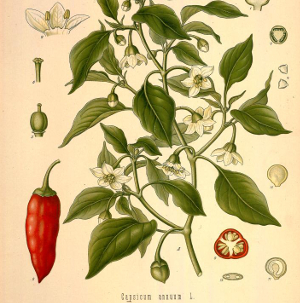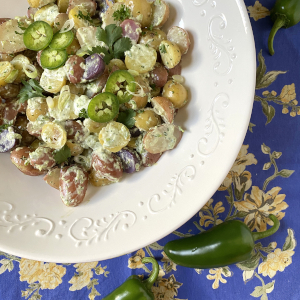
The Language of Spice: Chili, Chile, and Chilli
If you enjoyed reading last week’s hot chocolate recipe and happen to be interested in the language surrounding food, you may have wondered about the spelling of one of the key ingredients: chile. As I write up the recipes that hopefully will inspire your own home cooking, I occasionally come upon the name of an ingredient or traditional dish that requires a little bit of editorial finesse.

Take, for example, my recent pasta e fagioli. I faced a decision of whether to translate the name into English for those who were not familiar with this Italian soup. Since my grandmother pronounced this dish and other Italian classics so fluidly, it’s how they are ingrained in the culinary trove upon which I draw inspiration. Pasta e fagioli triumphs over pasta with beans.
When it comes to the fruit of the Capsicum plant, things get a little more complicated. The spicy flakes in my cabinet are labeled red chili, the ground ancho is labeled chile powder, and the chili powder you’ll find at the market contains much more than just the pepper itself. Which spelling is a food writer to choose?

According to the Chile Pepper Institute at New Mexico University, both chili and chile derive from the Nahuatl (Aztec) term chilli. Over time, this evolved to chile in Spanish-speaking Mexico and chili in the United States. [Try reading this article aloud for a bit of fun.] The Institute recommends using chile to refer to the plant or its fruit and reserving chili for the slow-cooked dish we commonly make with meat and beans. Of course, this only applies to American English. If you find yourself in the U.K., your order of chili comes with an extra “l.” Sour cream, too, I hope.
In Thirsty Radish articles and in-person classes, I focus on the value of ingredients for their culinary uses as much as the history and romance behind them, which factored into the naming of my chile hot chocolate. As I placed an ancho in my saucepan, the spelling was clear. American English may suggest chili for the pepper, but I know the value of ancho to the recipe, as well as cayenne. I sided with the guidelines of the Chile Pepper Institute versus the others that exist.
With mild plum and cherry notes, the ancho imparts a bit of romance and distinct flavor that calls for a different spelling than the slow-cooked meat and beans dish. So does the much hotter habanero and varieties between and beyond.
Experiment with chiles in the kitchen using recipes like my Mexican corn with chile butter, stuffed jalapeño skins, and spicy blood orange mocktail.
Image Credit: Biodiversity Heritage Library, contributed by Missouri Botanical Garden, Peter H. Raven Library




